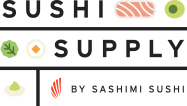Our little sushi supply dictionary
Sushi Supply has existed since 1997. As the first sushi store on the Hamburg market, we were able to expand and maintain our position. Of course, this is directly related to our love for sushi. And to give you a bit of our knowledge, we have a little sushi guide for you here.
If you're wondering where sushi actually comes from, we as experts don't want to withhold the answer from you. The beginnings of sushi lie in Asia, although not even in Japan itself. In fact, the story begins in the Mekong Delta. On this river lie today
- China
- Thailand
- Vietnam
- Laos
- Myanmar
- Kambodscha
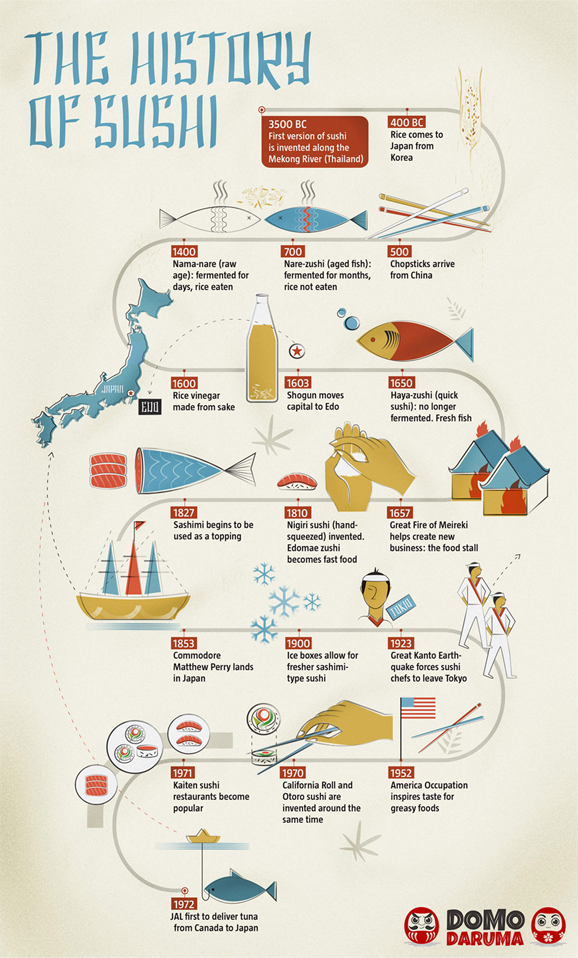
The local farmers in those regions had been fermenting fish with salt and rice for thousands of years, although they discarded the rice. This practice made its way to Japan around 300 BC and became known as Nare Sushi.
Approximately 1,000 years later, a chef in Osaka came up with the idea of fermenting fish with rice vinegar, allowing the rice to be eaten along with the fish. Shortly after, Oshi Sushi was born. Oshi means "pressed," and Oshi Sushi refers to a rectangular tower of sushi with various layers.
Another 300 years passed, and Tokyo had already become a bustling city, known as Edo at that time. The local chefs invented Haya Sushi, which means "quick sushi." They placed toppings like egg and fish on rice soaked in vinegar, giving rise to the modern Nigiri Sushi. Over time, different forms and styles of sushi emerged, leading to the diverse range of sushi we have today.
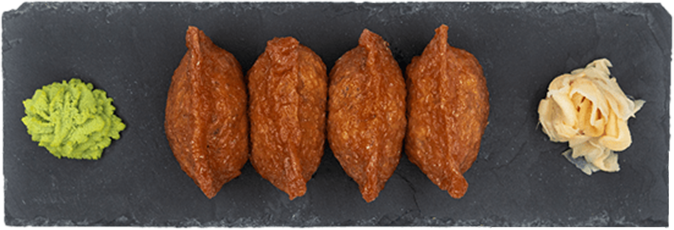

Sushi Knigge
Before we dive into our little sushi lexicon, here's a small guide on how to eat sushi. And don't worry, you don't have to follow these rules with us! In Japan, there are a few etiquette guidelines to ensure that you don't come across as rude while eating sushi. Here are a few of them:
- Sushi can be eaten with your hands.
- Do not rub the wooden chopsticks together to smooth them.
- Dip the topping in the soy sauce, not the rice.
- Do not mix soy sauce and wasabi.
- Eat the ginger as a palate cleanser between different types of sushi.
There are other rules that you should look into before a trip to Japan. However, as mentioned, we don't take them so strictly. Feel free to dip the rice into the soy sauce, add wasabi and ginger to your sushi—we're just happy if you enjoy it!
And now, let's move on to our little Sushi Supply lexicon:
Acai Bowl – Acai is a berry from South America and a true superfood! It has an incredibly high nutrient content, is low in sugar, rich in protein and fiber. It consists of 20% healthy unsaturated fatty acids and is rich in antioxidants, calcium, magnesium, iron, and vitamins.
California Roll – Unlike Maki Sushi, the rice is on the outside of the roll, while the nori seaweed wraps around the toppings.
Ebi Nigiri – Ebi means shrimp, so Ebi Nigiri is shrimp on rice.
Edamame – Edamame are Japanese soybeans that are harvested and prepared while still immature. They are also popular as a snack with beer in Japan.
Florida Roll – Similar to the California Roll, it is a type of sushi where the seaweed wraps around the toppings but not the rice. The rice is on the outside, unlike Maki Sushi. These rolls are also called Ura-Maki Sushi.
Futo Maki – Futo Maki means "thick roll." It contains three or more ingredients, unlike regular Maki.
Goma ae – Goma ae is a Japanese side salad with a sesame dressing. It is usually made with spinach.
Goma wakame – Goma wakame is a Japanese seaweed salad with sesame dressing.
Gunkan – Gunkan means "battleship" or "warship." It refers to a type of sushi that is heavily loaded with toppings.
Inari Tasche – Inari pockets are fried tofu pockets filled with rice. They are named after the Shinto deity Inari, who is considered the patron of agriculture, fertility, and rice.
Kappa – Kappa is the name of a Japanese water spirit that loves cucumbers. Therefore, Kappa Maki is filled with cucumber. Kappas have a hollow on top of their heads that must be filled with water for them to attack outside of the water. Since Kappas are also very polite, it is recommended to bow if one is attacked by a Kappa. They will also bow in return, spilling the water from their hollow and rendering them helpless. If you ever encounter one, let us know if the tip was helpful!
Kimchi – Kimchi is a Korean dish made from fermented vegetables. Traditionally, Napa cabbage and Korean radishes are prepared in this way, but other vegetables prepared through lactic acid fermentation are also called kimchi.
Maki – The topping (neta) is placed on top of the rice and rolled. So, the seaweed is on the outside, followed by the rice and then the topping.
Masago – Masago is fish roe that is commonly used in sushi. It is naturally orange in color. Green masago is usually combined with wasabi, and it is called Masago Wasabi.
Neta – Neta refers to the topping or filling of the sushi.
Nigiri – In Nigiri Sushi, the topping (neta) is placed on top of the rice.
Nori – Nori is a type of seaweed specifically used for rolling sushi.
Sashimi – Unlike sushi, sashimi is served without rice. It consists of raw fish or meat.
Soba Nudeln – Soba noodles are Japanese noodles made from buckwheat.
Sriracha Sauce – Sriracha sauce is a spicy Thai chili sauce.
Surimi – Surimi is a crab meat imitation typically made from fish protein extracted from fish fillets. At Sushi Supply, we pay close attention to the quality of the surimi we use.
Tamago Nigiri – Tamago is a Japanese omelette. In this case, a strip of tamago is placed on top of rice and wrapped with a strip of nori.
Tempeh – Tempeh is a healthy Indonesian specialty made from fermented soybeans using specific molds. It is considered a staple food in parts of Indonesia and is known for its mild flavor and firm yet tender texture.
Tempura – Tempura is a Japanese cooking technique where vegetables and seafood are typically coated in a batter made from rice flour, wheat flour, starch, and egg, then deep-fried.
Teriyaki – Teriyaki is a Japanese sauce made from soy sauce, sake (rice wine), and sugar.
Unagi – Unagi is a freshwater eel that is highly prized as a delicious food in Japan. It is traditionally enjoyed on the "Day of the Ox" but is also consumed throughout the year.
Unagi Sauce – Unagi sauce is a special sauce for sushi that resembles soy sauce but is slightly thicker and has a sweeter, fuller flavor.
Wafu-Dressing – Wafu is a Japanese vinaigrette based on soy sauce.
Yuzu – Yuzu is a Japanese citrus fruit known as the Japanese lemon. However, its flavor profile goes beyond that. It has a taste that combines lemon, mandarin, and grapefruit and is highly regarded in fine dining.
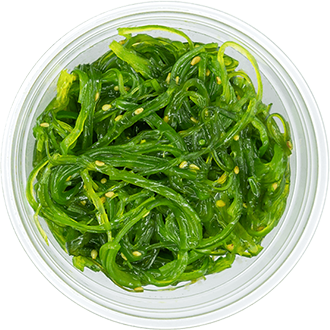
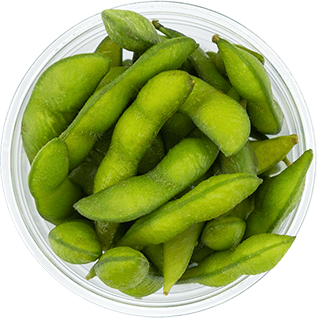



 Follow us
Follow us